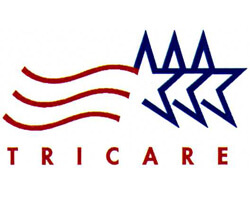Tips for Maximizing Your G.I. Bill Benefits

The GI Bill benefits were designed to help service members and eligible veterans gain an education or training and are earned through active duty.
There are five different programs for service members and two programs for survivors of those members who are disabled or died during active duty. Visit Military.com for the details of each program to determine your eligibility (2). Follow these tips to maximize your GI Bill benefits.
Planning
Work with the school to create your degree plan and map out the number of courses needed for the degree. Deciding on a major or training program will eliminate taking extra classes you don’t need.
Some GI Bill programs, like Post-9/11, you can take more courses during a semester because the funds are designed for a specific number of semesters and not course credit hours.
Not all four-year programs will be fully covered if you do not plan ahead and take more credits.
Credit Transfer
You can claim credit for some military experiences and training. To have experience and training evaluated for college credit, you will need to complete and submit a DD-295 application along with a copy of your discharge form DD-214 to the school.
You can request a copy of your military record from the National Archives. The school will evaluate and calculate the number of credits eligible for transfer and how they can be applied to your degree program.
You can use the Defense Activity for Non-Traditional Education Support (DANTES) to receive college credits in areas you can pass the exam.
DANTES offers three exam options: 1) College Level Exam Program (CLEP), 2) DANTES Subject Specialized Test (DSST), and 3) Excelsior College Exams (ECE). Each is designed to use your military training to pass introductory level classes (1).
Each option will help decrease the number of courses you are required to take and maximize your benefits. Keep in mind that not all colleges transfer credits the same.
It is a good idea to check out different colleges to transfer as many credits as possible.
The less GI Bill benefits you use early on, the more will be left later if you plan for a graduate level degree or need to return to school at a later time.
Cost Savings
Consider attending a community college with substantially lower tuition for a year or two before transferring to a four-year or university school.
For some programs, commuting or attending online classes will save the housing allowance funds, which can be up to $6,000 a year. Don’t forget to apply for financial aid, grants, and scholarships because you may be eligible.
Buy used books or rent books and return them after you are finished to minimize your out of pocket expenses (3).
Becoming a resident advisor on campus in exchange of free or reduced room and board will save living costs. Supplement your income by working at the college or through one of the VA programs.
The VA has work study programs that will pay veterans to work at certain organizations that benefit veterans. Working and careful budget planning will help extend your benefits.
Overall
You can maximize your GI Bill benefits through careful planning. Decide on the degree you want, explore colleges and find a GI Bill friendly college that will transfer the maximum credits towards your degree.
Attend some basic courses at a community college before transferring. Apply for student aid, start a work study program, and create a budget.
Commute, attend online courses, or become a resident advisor to minimize housing costs and purchase used books.








I am a veteran trying to transfer my Education benefits to my children. How can I do this ?